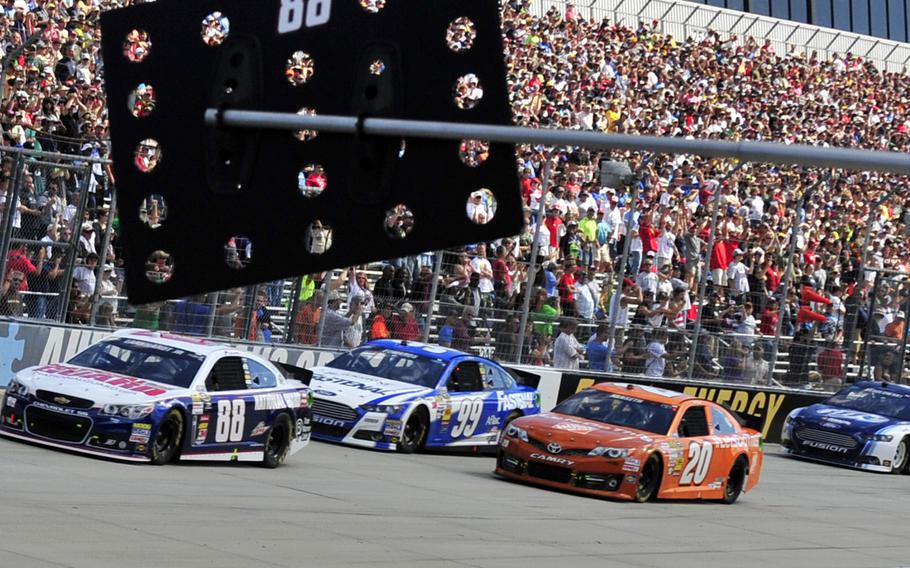U.S.
Guard testifies that it never analyzed effectiveness of NASCAR spending
Stars and Stripes May 8, 2014

Dale Earnhardt, Jr., driver of the No. 88 National Guard Chevy, leads drivers down the front stretch at the start of the AAA 400 Sept. 29, 2013, at Dover International Speedway in Dover, Del. Earnhardt started the race from the pole and finished in second place. (Chuck Walker/US Air Force photo)
WASHINGTON — The Army National Guard continued spending on NASCAR sponsorship for about a decade without analyzing the program or looking into why all active service branches found it too expensive and ineffective, the guard's acting director told a Senate panel Thursday.
Maj. Gen. Judd Lyons said the service's oversight over the NASCAR spending was inadequate, and a review of its sports marketing programs is under way and should be completed within 30 days.
The guard spends $32 million a year on a NASCAR sports marketing contract that splashes its logo across race events, and sponsors car and driver visits to public schools across the country. But a Senate Subcommittee on Financial and Contracting Oversight investigation, headed by chairwoman Sen. Claire McCaskill, D-Mo., reported Thursday that the spending resulted in zero new guard recruits in 2012 and last year only about 8,000 of the 1 million leads needed to meet recruiting goals.
"It became apparent to me that management controls and oversight were not where they needed to be," Lyons testified. "I share the subcommittee concerns — they are my concerns."
Lyons, who became director in January, said he was frustrated by the handling of the sponsorship and ordered the ongoing review to determine how the guard should be spending its sponsorship dollars.
The NASCAR sponsorship is designed to boost the National Guard's brand name, he said.
The racing league is second only to the NFL for reaching its demographic of potential recruits, Lyons said.
Thousands of students are exposed to the idea of serving through sponsored racecar visits to schools. For example, the service sponsored a visit by NASCAR star Dale Earnhardt, Jr. to a high school in Kentucky.
The National Guard's sponsorship NASCAR goes back about 10 years and was approved by at least four previous directors, according to the service.
But the recruiting value of the branding effort has never been fully known.
"Trying to tie that awareness directly down to an individual's decision to join the National Guard is elusive," Lyons said.
He said he was unaware of any Guard analysis that looked at the effectiveness of the program or alternative ways to spend the money. The sponsorship accounts for 57 percent of the Guard's sports sponsorship budget.
Sen. Ron Johnson, R-Wis., the ranking member of the oversight subcommittee, said he was confused by the Guard's marketing explanation and lack of data on the NASCAR spending.
"I understand marketing, and to me, this is gobbledygook," he said.
According to the Senate, other services had tried spending money on NASCAR but determined it was not a wise expense. The Army abandoned it in 2012 after finding it was the most expensive sponsorship for generating possible recruits and the Marine Corps stopped spending in 2006 because it could not measure the program's success. The Coast Guard only generated 350 leads on potential recruits after spending $9.5 million.
"The data is very clear — you are not getting recruits off NASCAR," McCaskill said. "We know because you told us."
tritten.travis@stripes.com Twitter: @Travis_Tritten